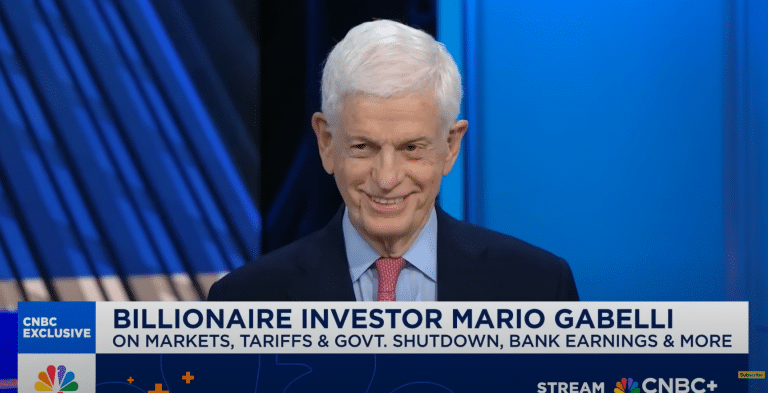“In general, Oil E&P companies generated robust free cash flow and returned a hefty chunk of it to shareholders via fixed dividends, variable dividends, and share repurchases…”
In 2023, West Texas Intermediate WTI and Brent crude prices declined 10.3% and 6.2%, respectively. While demand grew as expected, robust supply growth from Brazil, Guyana, and the U.S. offset OPEC Plus production cuts. Prices for, JKM, TTF and Henry Hub Natural Gas 61.0%, 57.6% and 26.7%, respectively. Continued robust supply growth from U.S. shale, warmer weather and abundant supply in storage suppressed natural gas and LNG prices.
Table 1 YoY Return

Sources: EIA, CME
The S&P Energy Index declined 1.3% and underperformed the S&P 500 Index, which returned 26.3%. Within the energy sector, Oil E&P companies outperformed gas E&P operators. Two gas E&P operators (Range Resources and CNX Resources) among the top five E&P performers for the year. Both companies benefitted from their hedge books. In general, Oil E&P companies generated robust free cash flow and returned a hefty chunk of it to shareholders via fixed dividends, variable dividends, and share repurchases. Lower gas prices impacted gas E&P operators. On the oilfield service and equipment side, offshore-related service companies outperformed land-oriented service companies. Offshore companies benefitted from increasing optimism of higher offshore activity, while land-oriented service companies were adversely affected by declining land rig count, and lower completion activities.
Table 2 Best and Worst Performers for 2023

Source: Gabelli Funds
Ten Noteworthy Events of 2023 From The Oilpatch
Ten events shaped the energy market in 2023:
1.Global demand remained resilient. 2023 global demand was 102.0 million b/d, up 2.4 million vs. 2022. Despite higher interest rates, U.S. consumers remained strong. U.S. demand was 20.5 million b/d, up 1.0 million b/d YoY. Demand from China also increased to 16.1 million b/d, from 15.0 million b/d. However, it should be noted that some of this increase went into storage. Finally, India demand also increased.
Exhibit 1

2. U.S. Administration ignores sanctions on Iran. During 1H’23, Iran floating storage, which had been built up due to sanctions, declined significantly as the Biden Administration decided not to enforce sanctions on the country. According to data from Kpler, in mid-2022, Iran had about 60 million barrels of unsold floating crude oil and around 50 million barrels of gas condensate stored on offshore tankers in the Middle East, Singapore and China. However, these storages declined to 26 million barrels and 1 million barrels, respectively as of late October 2023. At the same time, the country increased its production from 2.5 million b/d to 3.2 million b/d. This unanticipated increase in supply helped restrain commodity prices. With the release of the floating storage and increase production, Iran added almost 1.0 million b/d of supply to the market.
3. Technical Advancement and Motivated Producers. Despite rig count declining from 764 to 602 in 2023 and low DUC inventory, U.S. production increased to 13.2 million b/d in October from 12.8 million b/d during the same period in 2022. Higher production was driven by better equipment efficiency, increased well productivity, longer laterals, and improved completion technology. Some wells in the Permian basin are now reaching 15,000 feet vs. 5,000 in 2010. The average lateral is 10,000 feet.
Exhibit 2 U.S. Production

Production from private operators increased 31%, majors grew 8% and independent E&P declined 2%. Some of the privates have been motivated to the company.
Exhibit 3

4. Repeated OPEC+ Production Cuts Supported Prices in Challenging Economic Environment. OPEC 13 (including Venezuela, Libya and Iran) production averaged 28.1 million b/d in 2023, while allies led by Russia produced another ~12 million b/d. The Group reduced production by 2.0 million b/d in October 2022. OPEC Plus surprised the market in April with an announcement to voluntarily cut production by another 1.1 million b/d, with Saudi Arabia leading the way with a 500,000 b/d reduction. In July, the organization formalized the April voluntary cuts into policy, and the Saudis reduced its production by another 1.0 million b/d. These lower production quotas will remain in effect until the end of 2024.
Towards the end of 2023, cracks emerged in the group as Nigeria and Angola pushed back on further production cuts. While Nigeria reaffirmed its commitment to remain within OPEC, Angola announced it would leave the group in January 2024. Subsequently, OPEC Plus announced another 1.6 million barrels of voluntary reduction effective January 2024 for three months.
5. Venezuela. In 2019, the U.S. imposed financial sanctions on Venezuela’s state-run oil company PDVSA. The sanctions were in response to Venezuela’s 2018 elections, which the U.S. and other Western nations rejected as fraudulent. The Biden Administration lifted sanctions on Venezuela in return for free elections. Accordingly, PDVA crude oil production increased from ~500,000 b/d to 750,000 b/d. Venezuela is scheduled to hold elections sometime in 2024 (a formal election date has not been announced yet).
6. Russian supply unaffected by sanctions. Despite a Western government price cap and sanctions on Russian crude products, Russia’s crude products remained on the market. Russia circumvented Western government sanctions by using its dark fleet to transport its oil and other crude products. The strength in demand for Russian products came from India and China. The price cap of $60 has proven ineffective as Russian Urals trade at a discount to Brent and below the price cap.
7. Deals, deals, and more deals. Mergers and acquisitions in the oil patch picked up in 2023, especially in the Permian basin. The year began with smaller public companies such as Vital Energy and Permian Resources acquiring smaller peers and private operators to shore up their acreages and inventory. The majors were also active. Chevron announced in May that it would acquire PDC Energy to boost its position in the DJ basin. It followed up with the acquisition of Hess Corporation in October for $53 billion, which included assets in the prolific Stabroek block offshore Guyana and producing assets in the Bakken basin. ExxonMobil acquired Denbury Resources for $16 billion to boost its carbon capture infrastructure and followed up with the acquisition of shale driller Pioneer Natural Resources for $60 billion. The combined companies will have total reserves of over 16 billion barrels of oil equivalent and produce 1.3 million barrels of oil equivalent per day in the Permian basin.
M&A activity was not limited to E&P operators. Oilfield service and equipment provider Patterson-UTI Energy merged with NexTier Oilfield Solutions to bolster its pressure-pumping business. Midstream operator OneOk Resources acquired Magellan to build its presence in the Permian. Also, Energy Transfer acquired Lotus Midstream for $1.5 billion and Crestwood Equity Partners for $4.7 billion to bolster its position in the Permian and Williston basins.
8. Rising geopolitical tensions. Hostilities in the Middle East have significantly increased since the war in Gaza began in October. Houthi rebels are attacking merchant ships, tankers, and naval vessels in the Red Sea, a vital waterway for commercial shipping that connects markets in Europe, Asia and Africa. Ships traveling through the Bab Al-Mandab Strait (which is located between Yemen on the Arabian Peninsula and Djibouti and Eritrea on the African coast) are particularly vulnerable. Approximately ~8 million b/d of crude, crude products and fuel shipment pass through the Bab Al-Mandab Strait. To avoid conflicts, some shippers are re-routing their cargoes around the Cape of Good Hope, which adds another 10-14 days to shipments and increases costs.
While conflicts seemed contained to the Red Sea, another chokepoint in the region is the Strait of Hormuz. Approximately 20 million b/d of crude oil, condensate, and crude oil products and 10.8 bcf/d of LNG pass through the Strait of Hormuz. There are concerns that if Iran is drawn into a direct conflict in the region, it may cause disruption in the Strait of Hormuz. While it is unlikely that Iran can directly and fully shut down the Strait of Hormuz, a more likely scenario is a major oil spill will close the Strait for a period of time. Any disruptions in the Strait of Hormuz is far more significant for the global energy market.
Exhibit 4 Bab el-Mandeb and Strait of Hormuz are Key Chokepoints

Source: EIA
9. Offshore momentum continues. Day rates for 6th and 7thgeneration floaters have more than doubled over the past 18 months from ~$200,000 per day in 2022 to $460,000-480,000 per day. They are expected to exceed $500,000 per day in 2024. At the same time, contract terms have lengthened from ~200 days to around 1.5 years. Between 2023 and 2025, global offshore project FID is projected to exceed $200 billion. Finally, industrywide subsea tree awards are projected to exceed 360 trees in 2023, up from 348 in 2022. Between 2017 and 2021, industrywide subsea tree awards averaged 229 per year.
10. Natural gas prices. Natural gas prices averaged $2.55/MMBtu in 2023, compared to $6.40/MMBtu in 2022. A warmer winter and growth in associated gas from the Permian basin increased gas in storage. In 2023, demand for natural gas was 107.2 bcf/d vs. supply of 108.2 bcf/d. Supply from associated gas grew 3.5 million bcf/d as older oil shale wells became gassier and more tier 2 and tier 3 acreages, which have a higher gas mix, were being drilled. Meanwhile, production from the Marcellus/Utica and Haynesville producers increased by 1.0 and 1.4 bcf/d, respectively.
2024 Outlook
Global Crude Oil Supply vs. Demand
In our base case scenario, we project 2024 global demand to grow 1.1 million b/d relative to 2023, driven by 2.5% global GDP growth, higher consumption in emerging markets (China, India, the Middle East, and other non-OECD Asian nations), growth in jet fuel and strong petrochemical demand.
Table 3 Global Crude Oil Supply vs. Demand

Source: U.S. EIA, OPEC, IEA, JODI, and Gabelli Funds estimates
On the supply side, we project global production will grow 1.7 million b/d, driven by the Canada, Guyana, and Brazil. We assume OPEC Plus will maintain its voluntary cuts of 1.6 million b/d that began in January 2024 for the whole year. We believe it is unlikely that U.S. production will increase another 1.0 million b/d in 2024. Lower rig count and decreasing well productivity will impact production growth. As mentioned earlier, private operators grew production aggressively last year because they may have boosted production to sell themselves for a higher price. However, we expect U.S. production growth will grow slower relative to 2023 due to continued capital discipline by independent E&P operators, declining well productivity, lower rig count, and depleted DUC inventory. Additionally, many of the tier 1 acreages have been drilled, and current tier 2 and tier 3 acreages are not as productive and have a higher natural gas mix vs. oil. U.S. operators remained capital-disciplined and targeted production growth of low to mid-single digits in 2024.
Regarding Guyana, Exxon/Hess brought the third play, Payara, online in November 2023. This development is expected to reach an initial production of ~220,000 b/d in 1H’24. This would bring total production from Guyana to 620,000 b/d.
Finally, Brazil continues to develop its offshore resources. Brazilian production is projected to grow from 3.4 million b/d in 2023 to 3.8 million b/d in 2024.
Crude Oil Prices will Remain Range Bound
Looking to 2024, we expect macroeconomic factors to be the primary driver of crude prices, followed by fundamentals. Demand uncertainties and recessionary concerns will offset continued OPEC market management and rising geopolitical tensions. We believe there is enough cohesion among the remaining OPEC members and Saudi Arabia’s strong will to at least maintain its production cuts for the full year. It is likely that the Saudis will defend $80/bbl oil and should crude prices decline below $70 for a sustained period of time, OPEC will act forcibly and cut production deeper to try to jolt prices higher. OPEC management will likely keep the floor on crude prices around $70/bbl. Due to OPEC’s spare capacity (~5.6 million b/d) and Chinese inventory, we believe crude prices will unlikely exceed $100/bbl on the upper end. OPEC does not want excessively high crude prices as it can cause a recession, decrease demand for crude and crude products, and encourage the development and acceleration of electrification and other alternative energy sources.
Table 4 OPEC Spare Capacity

Source: OPEC MOMR, Gabelli Funds estimates
Exhibit 5 Chinese Inventory Highest in 2 Years

China has historically released crude inventory when crude prices exceed $90/bbl for an extended period. Chinese inventory has steadily increased in 2023 and is approaching a 2-year high. Accordingly, we see crude prices will likely remain in the $70-90 per barrel range. We believe this range represents the ideal range for both consumers and producers.
Natural Gas Prices Should Improve in 2H’24
The natural gas market will enter 2024 with a supply and demand imbalance. Demand will likely average 108.9 bcf/d, while supply will average 110.0 bcf/d. However, demand is expected to increase toward the end of the year as the new LNG export facilities come online. In 2H’24, about 1.5 bcf/d of new LNG export capacity are scheduled to come online, followed by another 3.0 bcf/d in 2025. On the supply side, we project associated gas growing 1.1 bcf/d to 43.2 bcf/d in 2024, primarily driven by the Permian basin.
Table 5 Natural Gas Domestic Supply vs. Demand

Global LNG Dynamics Remains Favorable
Global LNG demand grew ~3% in 2023 to 401 million tons (mtpa). Global LNG demand is projected to grow another 3% to 412 mtpa in 2024. European countries are replacing Russian natural gas with LNG. Asian economic growth is also driving LNG demand growth. LNG demand is projected to grow by 3% annually through 2040.
Approximately 26.1 mtpa of global liquefaction capacity are expected to come online in 2024 from the U.S., Senegal and Russia. In the U.S., phase 1 of Plaquemines LNG project, with 8.0 mtpa of export capacity is expected come online in 2H’24 (and ramp to 10.0 mtpa in 2025). The project includes a second phase which once completed will bring the total project capacity to 20 mtpa by 2026. Indonesia’s Tangguh Train 3 became operational in 4Q’23 and is expected to ramp to 3.8 mtpa in 2024. Senegal’s 2.5 mtpa Tortue FLNG project is set to come online in 2Q’24. While the first train of Russia’s Artic LNG-2, with 6.6 mtpa of capacity (which is expected to come online in 1Q’24), it may be delayed due to Western sanctions.
Despite new export facilities from the U.S., Canada, Qatar and other countries coming online beginning in 2024, the supply gap is expected to increase to ~135 mtpa supply gap in 2040.
Exhibit 6 U.S. LNG Export Capacity Exhibit 7 Still Short LNG in 2040

Source: Cheniere
E&P Global Capex

Our 2024 global E&P capex forecast is $432.8 billion, up 6.2% YoY.
Table 6

North America and International is expected to grow by 2.0% and 8.3%, respectively. We see that the Middle East, Africa, and Latin America will lead international growth. Saudi Arabia is expected to increase capacity to 13.0 million b/d by 2027, up from 12.0 million b/d currently. The UAE is expanding the capacity of some of its largest offshore oilfields as part of its P5 program aimed at ramping up oil production to 5 million b/d by 2027, up from 4 million b/d currently. Kuwait aims to boost its oil production capacity to 3.2 million b/d by 2025 or 2026 and 4 million b/d by 2035. Iraq also plans to increase its oil production capacity to around 7 million b/d in 2027 vs. 5 million b/d. Ongoing projects in Brazil and Guyana and higher activity in Mexico, Colombia, and Ecuador will drive higher spending in Latin America.
Themes for the E&P Sector in 2024
· Balance sheet strength. Two years of robust crude prices have repaired many E&P balance sheets. The average leverage is less than 1.0x across the sector and is expected to decline to around 0.7x by year-end 2024 (assuming crude prices average $80/bbl for 2024). The industry remains committed to maintaining its balance sheet strength and capital discipline.
Exhibit 8 E&P Operators Net Leverage 2018-2024P

Source: Company reports, Gabelli Funds estimates
· Free cash flow generation. Assuming crude prices average $80/bbl and declining oilfield service prices (primarily OCTG, sand, and diesel fuel), E&P companies should continue to generate healthy free cash flow in 2024. We estimate FCF yield among E&P companies will average ~10% in 2024, up from 7% in 2023. Over the past few years, the Energy sector’s capital allocation framework shifted from low return production growth to returns on investment, generating free cash flow, and returning cash to shareholders. Shareholder return includes fixed dividends, variable dividends, and share repurchases. We expect this to continue in 2024.
Exhibit 9 E&P Operators FCF Yield 2018-2024P

Source: Company reports, Gabelli Funds estimates
· Capital efficiency. E&P companies are drilling on more tier 2 and tier 3 acreages. These acreages produce more natural gas and less oil. As a result, operators must work harder by drilling and completing longer laterals or more wells to keep oil production flat. Producers with higher quality acreages will outperform those who have more tier 2 and tier 3 acreages.
· Deals, deals, and more deals. We expect to see more M&A activity in the oilpatch in 2024. M&A activity in 2022 and 1H’23 focused on smaller bolt-on transactions driven by private operators selling out to their public peers. In 2H’23, large corporate deals returned, with Exxon acquiring Pioneer Natural Resources for ~$60 billion and Chevron acquiring Hess Corporation for ~$53 billion. However, these deals, even for high-quality assets, have been completed with just a 5-15% premium, well below the 30% average premium in the few years prior to the COVID pandemic. Nevertheless, we expect industry consolidation will lead to fewer, but higher quality, companies over time.
· Will a European Major Acquire U.S. Onshore Acreage? We would not be surprised if one of the European majors, like Shell or BP, acquires onshore acreage in the U.S., most likely in the Permian basin. Acquisition candidates include Diamondback Energy or privately held Endeavor Energy. Diamondback Energy, based in Midland, TX, is one of the lowest-cost producers in the basin. The company owns ~470,000 net acres in both the Midland and Delaware portion of the Permian and produces ~450,000 boepd. There is ongoing speculation that Endeavor Energy is exploring a sale. Endeavor owns 500,000 net acres in multiple basins, including ~350,000 net acres in the Midland part of the Permian basin. It is producing over 330,000 boepd. The acquisition prices is expected to be $25-30 billion.
· Change of Control Packages. Which public company will be the next one to be acquired? We believe executives at companies with significant change-of-control payout packages have increased incentives to sell.
Table 7 Management Change in Control Payouts

· U.S. Elections. 2024 is a U.S. presidential election year. We expect it to have a limited impact on the energy sector if Democrats retained control of the White House. A Democratic victory would keep the status quo, which includes a gradual tightening of environmental regulations and continued drilling restrictions on Federal land. On the contrary, a Republican victory may result in looser environmental regulations, increased permitting to drill on Federal land, and changes in foreign policy, including enforcing sanctions on Iranian and Venezuela oil more stringently.
Themes for Oilfield Service and Equipment Sector in 2024
· U.S. land will be a mixed picture. We may be near the bottom in the decline in rig count. Steady activity levels from oil drillers offsets lower activity from natural gas drillers. Private operators accounted for nearly 50% of operated rigs at the end of 2022 but declined to around 40% toward the end of 2023. Crude prices remain constructive for them to consider adding rigs again. Depressed natural gas prices have led natural gas E&P operators to drop rigs. Natural gas drilling is not expected to pick up until 2H’24, ahead of LNG exports coming online in 4Q’24 and 2025. Completion activity will follow rig count with a six-month lag.
· International E&P capex remains robust. Continued growth in international activity driven by the Middle East/North Africa National Oil Companies (NOCs) and robust growth in Latin America.
· The offshore recovery gains further strength. Offshore barrels are essential for reserve replacement, production growth, and capacity additions. SLB projects a broad-based offshore recovery with $500 billion of global FIDs between 2022 and 2025 from over 30 countries, including over $200 billion in the deepwater. About 80% of the FIDs are viable at oil prices below $60/bbl, and ~70% of the projects break even at $50/bbl. Capital expenditures for offshore projects are increasing. In its latest five-year plan, Petrobras, the largest offshore driller, increased its E&P capex budget by 14% to $73.5 billion between 2024 and 2028, up from $64.3 billion in its prior five-year plan (2023-2027). Meanwhile, project FID is projected to exceed $160 billion in 2024, and industrywide subsea tree awards are expected to exceed 300 trees for the third consecutive year.
Exhibit 10 Offshore Project Breakeven

Source: Diamond Offshore
· LNG export facilities buildout continues. As noted earlier, we are in the midst of a robust multi-year LNG order cycle. There’s about 490 mtpa of nameplate capacity installed, about 135 mtpa is under construction. Since 2017, there have been about 205 mpta of LNG project FIDs. Approximately 65 mpta of LNG projects received FID in 2023. Baker Hughes projects the industry will see awards of another 65 mpta in 2024, 30-60 mtpa in 2025, and 30-60 mtpa in 2026. In total, Baker Hughes estimates the industry needs requires 800 mtpa of nameplate capacity in order to meet 2030 demand and therefore, expects the current LNG order cycle to extend beyond 2026. Baker Hughes and Chart Industries are the main beneficiaries of the current LNG order upcycle.
Table 8 LNG Export Facilities Entering the Market 2022-2028

Source: Company Filings, GIIGNL, Gabelli Funds estimates
· Profitability among service providers is projected to remain resilient. Despite the declining rig count and frac spreads, day rates for high-specification land rigs and pricing for contract pressure pumping work have remained relatively stable compared to prior cycles. Land rig contractors would choose to idle rigs than provide deep discounts. Among pressure pumpers, 72% of the frac supply is held by the top 5 operators. Like land rig contractors, pressure companies would rather idle spreads than work their equipment in harsh conditions at a discount and not generate a return on investment. In addition, the transition to electrification helps frac companies maintain pricing. Many electric spreads are only deployed with a three-year contract and known pricing.
Offshore rig contractors have experienced higher day rates, while subsea equipment providers are getting improved pricing in their bidding process. All these factors should allow many oilfield service and equipment companies to maintain or improve their operating profitability.
· Free Cash Flow Generation and Shareholder Return. Structural cost reductions, profitability improvements, internal efficiency increases, and a high level of working capital invested in 2023 are expected to translate into higher free cash flow generation for many oilfield service companies in 2024. Free cash flow generation will remain important as shareholders still want cash returned. Several companies have shareholder return programs in place. SLB plans to return a minimum of 50% of its FCF back to shareholders via dividends and share repurchases. Similarly, Halliburton intends to return at least 50% of its FCF to shareholders. Other companies with shareholder returns in place include TechnipFMC, Helmerich & Payne, Patterson-UTI Energy, Liberty Energy, and ChampionX. We expect more companies to announce their intentions to return cash to shareholders in 2024.
· M&A spreading to suppliers. We believe M&A activity will spread to the oilfield service and equipment sector. Subscale companies that can benefit from M&A include Diamond Offshore, Weatherford Int’l, and Dril-Quip.










